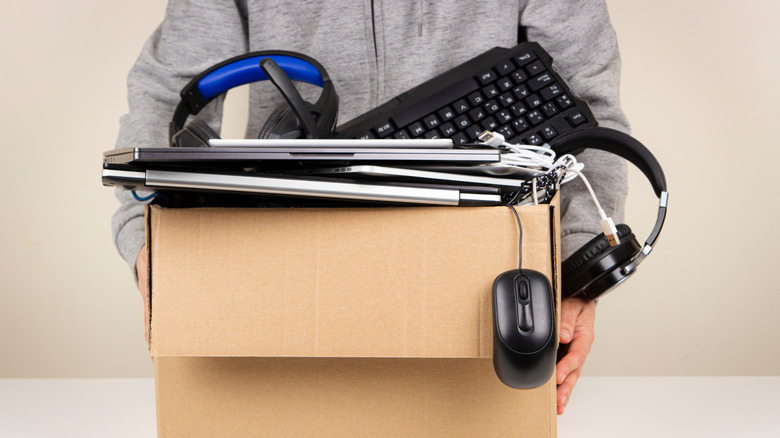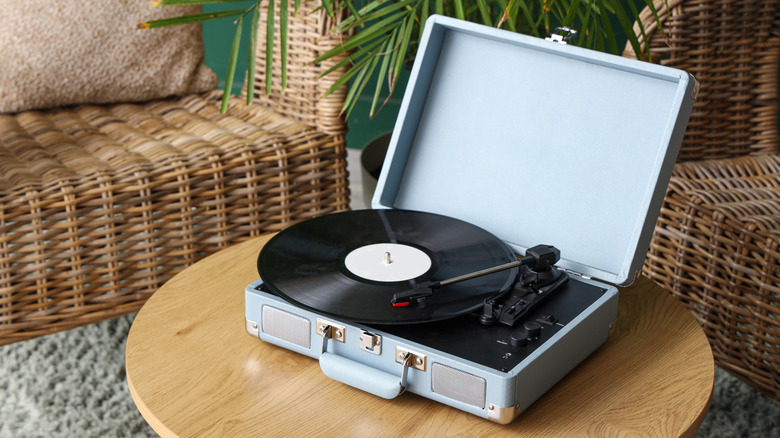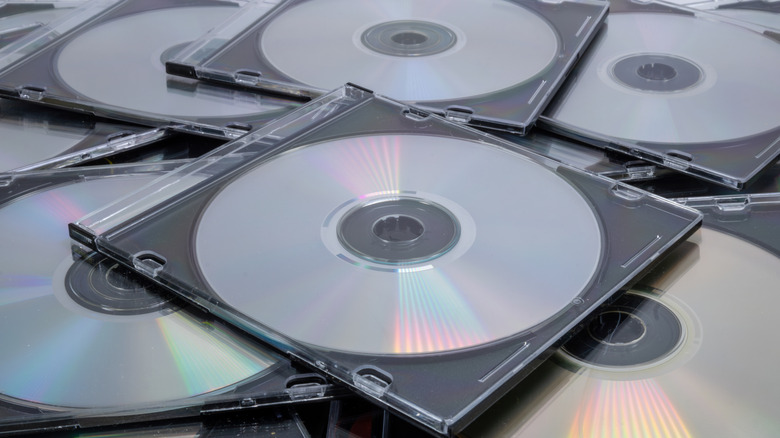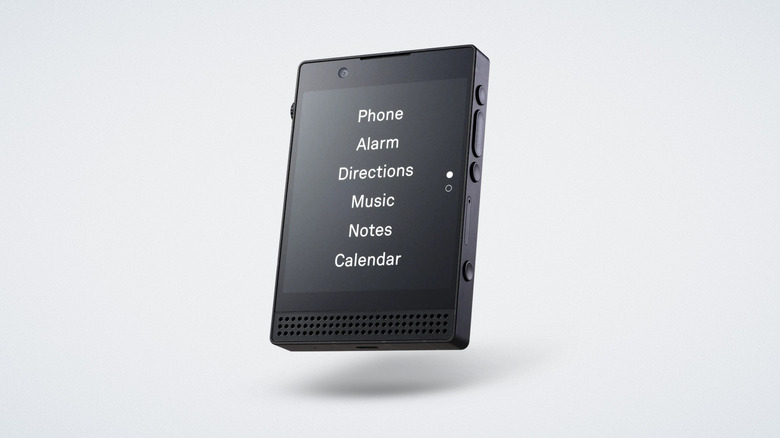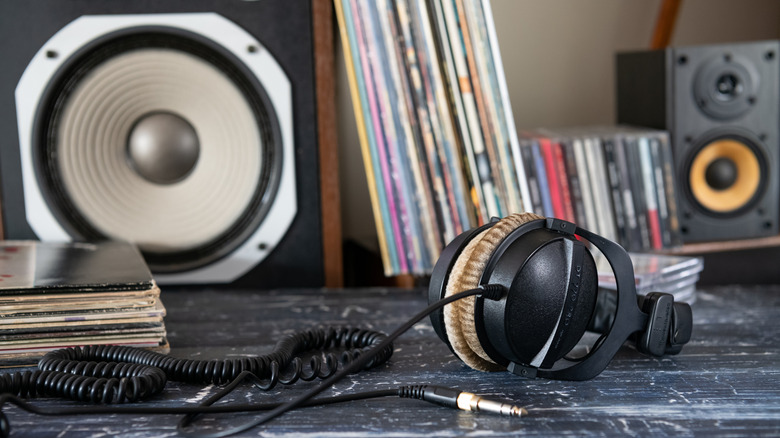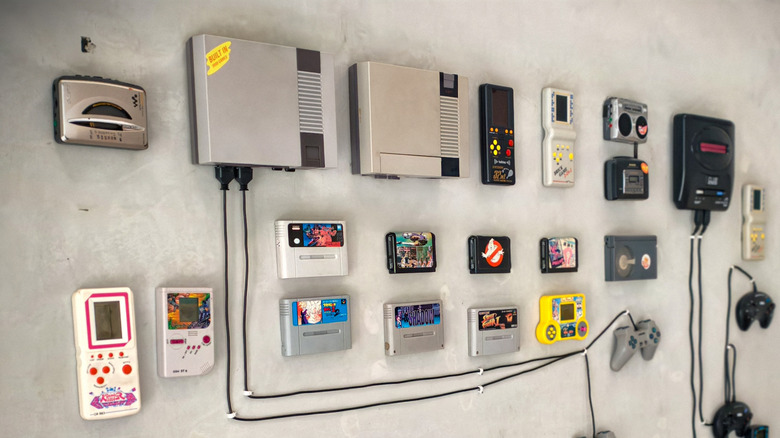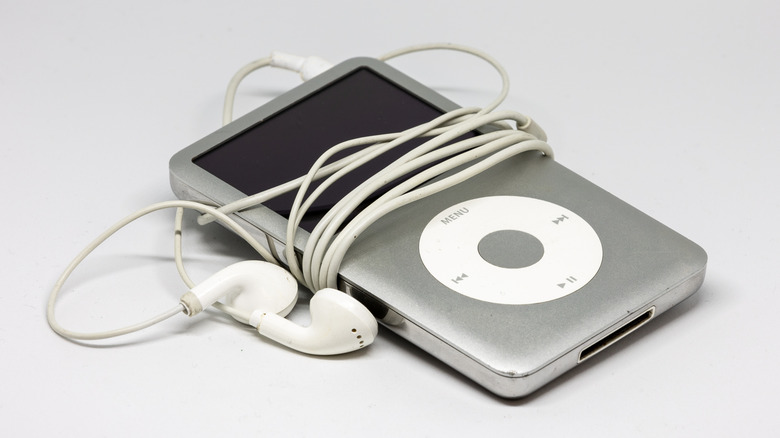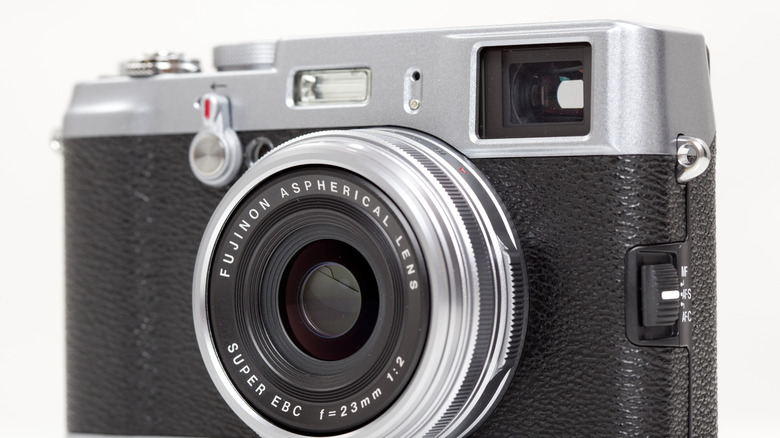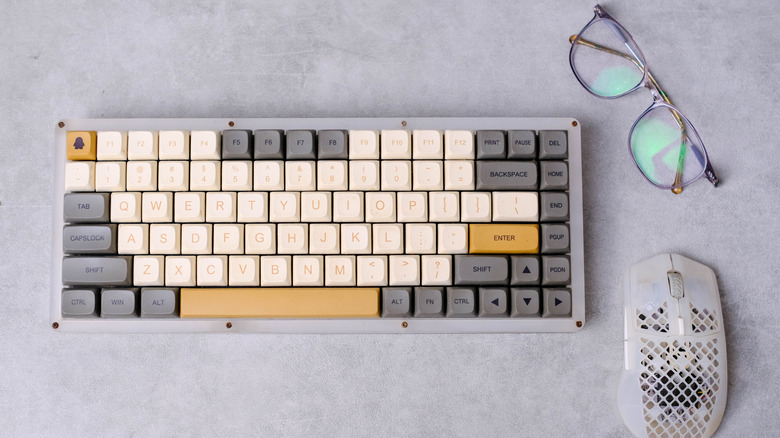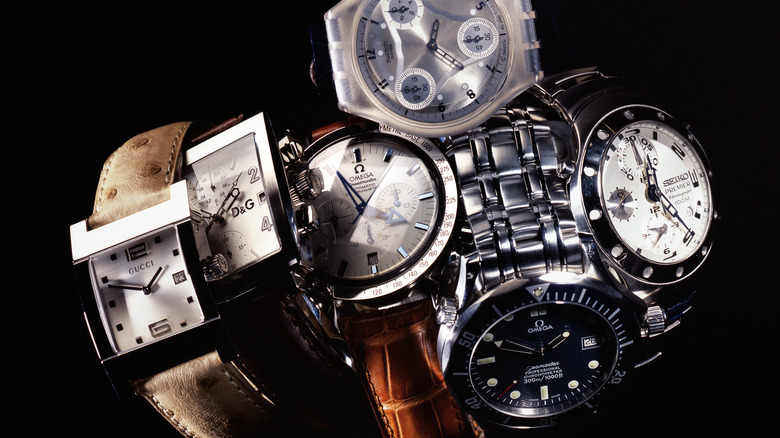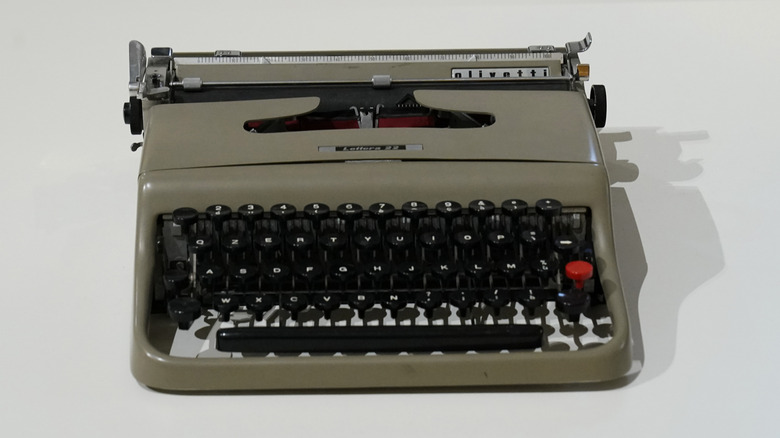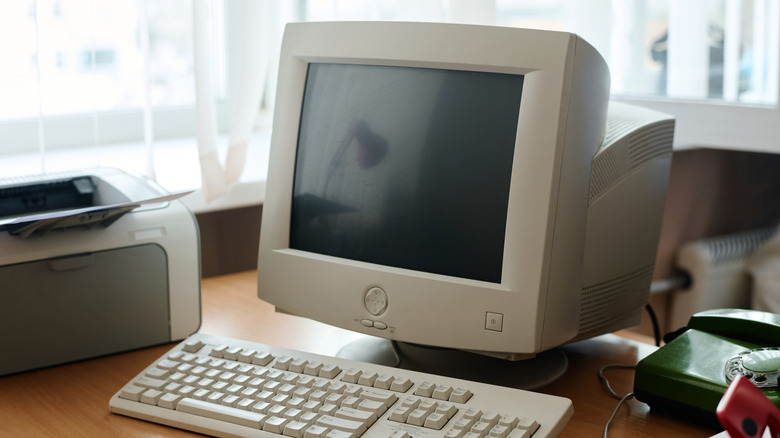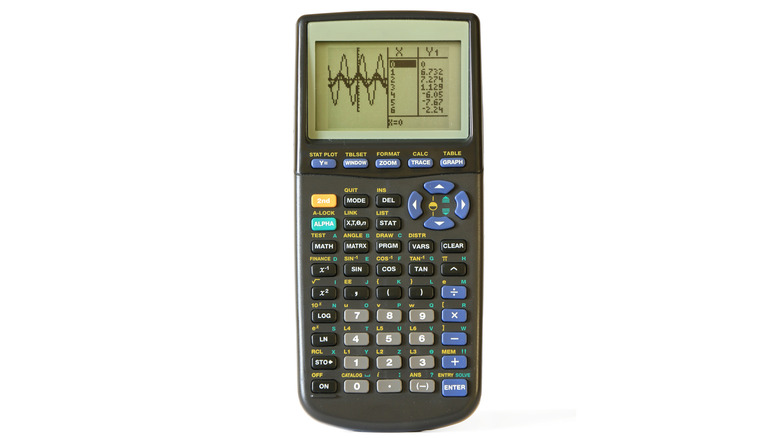13 Old Gadgets That Are Worth Buying Today
We may receive a commission on purchases made from links.
The world is full of old tech devices most Gen Z kids will never learn to use ... or so we thought. We jest that younger generations don't know that the save icon resembles a floppy disk, and yet it's thanks to the interest of younger generations that some retro gadgets are making a high-tech comeback. People, young and old, are fed up with Samsung and iPhone's new copy-and-paste smartphones and going instead for flip phones and digital cameras. This isn't just an obsession with vintage relics. Some older tech is worth using today — and in some cases, it may even be preferable to modern options.
We're taking a look at old gadgets that still have a place in the market and our lives today. Our definition of 'old' will vary here. Some of the items on this list have only been around for a couple of decades, while others were manufactured just a century ago. In other cases — like with dumb phones — the old device is a purposeful regression to an earlier period of technology, even though the hardware is new. Here are 13 you might like to try.
Vinyls and turntables
More people listen to vinyl records today than CDs, and the data suggests that it's Gen Z leading the charge. And come on, who doesn't love the ritual of pulling a vinyl out of its sleeve, laying it down on the platter, and gently setting the needle into place? That delicious crackling sound is practically ASMR. Pressing play on your music streaming service app doesn't hit the same. It's highly subjective whether vinyl records actually sound better than CDs, but many people love their idiosyncratic warmth.
Aside from secondhand sources, you can buy used vinyl records online. Discogs.com helps you purchase vinyls based on their cosmetic quality and playback performance. You'd be surprised how many modern artists release their work on vinyl, too. Bandcamp is a testament to this. Visit your favorite artist's page and see if they have any limited edition runs of vinyl releases.
As for the turntables, the 10 best record players for any budget are all of modern manufacture. You can find vintage turntables out there, often cheaper, but consider that they may introduce challenges with finding replacement parts and repair guides. Some turntables double as digital converters for your vinyl collection, such as this Ion LP 2 FLASH.
CDs (or any disc media)
You've seen the news by now: Netflix cracked down on password sharing, which inspired most major streaming services to follow suit. It only adds insult to injury, considering streaming services were one of the final nails in the coffin of digital media ownership. You don't actually own any of your Amazon Prime Video content, nor do you own your Steam games, or any app (like Photoshop) with a subscription. The best way to fight back against this is with disc media, like CDs and Blu-rays.
Disc media doesn't last forever, obviously, but the Library of Congress determined discs can last up to 30 years in good storage conditions. Plus, there are proven DIY methods for repairing scratched CDs. So dig through that old storage room of yours and grab your CDs, DVDs, and Blu-rays, or buy them secondhand.
For some people, the ultimate goal is not to use their disk media but rather to transform it into a digital library. Ripping music from CDs and digitizing DVDs is easy. Useful movie and TV apps like iCollect and Plex make it easier still to organize and stream that content.
Dumbphones
Something we did not expect to see on the 2020s bingo card was the emergence of so-called dumbphones. The antithesis to smartphones, dumbphones are purposefully limited to calling, texting, photo-taking, and other bare-minimum functions — i.e., the reincarnation of phones before 2007. They eschew annoying notifications, social media apps, and games to combat phone addiction, a very real psychological phenomenon.
To be clear, dumbphones are not your old Razer Flip from 20 years ago. They use modern hardware developed by modern manufacturers. Check out our list of nine of the most minimalist dumb phones available on the market now. The idea is that you have connectivity for necessary communication and emergencies, without your phone becoming a black hole that consumes your attention span or ruins your enjoyment of the moment.
There's plenty of debate about whether or not you even need a dumbphone. Many argue that it's more a matter of changing how you use your smartphone. Plus, these dumbphones aren't necessarily cheaper; The Light Phone 3 (pictured above) starts at $799. Clearly, though, there's a market for these things, and you'll find people all across the internet attesting how dumbphones changed their lives.
Headphones and speakers
Headphones and speakers have only changed incrementally in recent decades. While external aesthetics have evolved to fit the times, the core driver technology has remained largely the same. It's only when you purchase modern high-end speaker systems with all the latest bells and whistles that you notice a difference — and even then, it's marginal.
The Beyerdynamic DT 770 Pro, a set of studio-grade headphone monitors that is almost identical to its original 1985 version, is a perfect example. It's common knowledge among audiophiles that you can purchase speakers and headphones that are as old as you are, that still work great. In fact, there's a longstanding concept known as 'burn-in', where some believe that speakers that have been played for a longer amount of time sound better.
When it comes to purchasing vintage headphones and speakers, the primary concern is whether or not you can find spare parts for that model. Old headphones, for example, often require you to replace the pads, but few brands (like Grado and Koss) sell replacement parts for their older models. If you're thrifty and good with your hands, then you may be able to save money by fixing an old set that's been marked as broken; simple soldering is all you need to replace a busted cable, for example. Having said this, we don't recommend buying a used set of Bluetooth headphones or speakers, since the battery will likely be at limited capacity and difficult to replace.
Retro game consoles
While AAA game companies are pushing for hyper-realistic graphics that take a leviathan GPU to run, a considerable subset of gamers prefer old-fashioned 2D pixel art. As evidence of this, Steam's pixel graphics category includes over 20,000 items, and many games with Overwhelmingly Positive ratings are decidedly retro. Whether classic or new indie titles, retro gaming is very in. You have two options for retro consoles. One option is to purchase old hardware and get it working with some DIY elbow grease, or two, purchase a modern retro game console.
Older consoles often still work, but some components may be broken or require significant workarounds to support modern standards (like HDMI or Bluetooth). YouTuber Zac Builds is an excellent example of a retro enthusiast breathing new life into old consoles by modding them. Zach has videos on how he overhauled the Sega Dreamcast, the Nintendo 64, and the PlayStation Portable, among others.
Option two is to buy a modern console designed for emulation. The Retro Pocket 4 is one such handheld console that can play games from a wide variety of console emulators. There's a thriving market for analogue pocket alternatives that offer a retro gaming experience. Whether video game emulators are illegal is up for debate, but the success of emulators (despite legal blowbacks) proves that the retro gaming experience is not going anywhere.
iPods (and MP3 players)
Designated MP3 players like classic iPods are an excellent choice for owning your media. Among the many reasons an old-school iPod is still worth buying today, perhaps the biggest is the lack of distractions and algorithms. It's a purpose-built machine that plays music and nothing else. Although it's an extra device to carry around, it invites you to fully immerse yourself in your music with none of the doom-scrolling.
Of course, there are some caveats. First, replacing the battery on an iPod Classic can take up to 2 hours and is rated as very difficult by iFixit. iPods also don't support some modern audio formats, such as FLAC or Opus. Bluetooth is also not an option on anything but the iPod Touch, but some users prefer to use their wired headphones anyway. Pricing for, say, the iPod Classic on eBay hovers between $100 and $300. Despite that, listening to your music in such a streamlined, unadulterated form may outweigh the downsides.
Film cameras
The benefits of film photography include being excellent for black and white images and having a natural film grain look that's highly appealing to many. Though less convenient, the analog aesthetic of film (like with vinyl) is the main draw here. Everyone loves photos that look like something straight out of a pre-2000s scrapbook. Plus, having a limited number of shots forces you to be more intentional, creates a satisfying challenge, and is bereft of distracting digital readouts on a digital camera. Thankfully, you can find many excellent used and new film cameras to bring out your inner Ansel Adams. Examples include the Fujifilm X100V and the Ricoh GR.
If you're not ready to convert to film and its downsides, then a digital fixed-lens or DSLR can produce photos an order of magnitude better than your smartphone. A popular (and expensive) example is the Fujifilm X100 VI, or the Nikon Z6 III. If you buy used, the main thing you want to pay attention to is shutter count. On average, even the longest-lasting cameras can only open their shutters between 200,000 and 300,000 times.
Mechanical keyboards
Some of the best keyboards on our list of low-profile alternatives to Apple's Magic Keyboard are mechanical ones. Mechanical keyboards go way back to computing's infancy; UCLA's first computer in the '70s used a mechanical keyboard, for example. What sets mechanical keyboards apart from the competition (membrane keyboards) is that every key has its own switch. This results in a more satisfying typing experience (especially for gaming), and the keyboard overall lasts for up to 100 million key presses, compared to 10 million for a membrane keyboard. Long story short, these are excellent when purchased used, potentially even when decades old.
Mechanical keyboards tend to be easy to repair. Most broken switches can be replaced, and sticky or tough keys can be lubed for a smoother typing experience. Older keyboards may not support hot-swapping like modern mechanical keyboards do, but even then, you'll only need to do some basic soldering to replace them. Worn-out keycaps can also be replaced.
If you're truly dedicated, you can try out different types of switches. Each switch type offers a differing degree of key-switch resistance or key-press sound. Just know that owning a mechanical keyboard means you're signing up for regular maintenance that's not required for membrane keyboards, but that may well be worth it for a long-lasting keyboard with excellent typing performance.
Mechanical automatic watches
The $800 asking price makes the Apple Watch Ultra 2 probably not worth it for most people, but $800 is nothing compared to mechanical watches. The allure of mechanical watches is primarily as a status symbol. Someone wearing a Patek Philippe may be trying to say something about their bank account. Beyond that, mechanical watches age very well. They're built better and often rely on automatic movements (where the watch self-winds with the swinging of your arm as you walk) instead of batteries. Experts recommend regular servicing a few times per decade, but other than that, these watches truck on when others end up in a landfill.
Although a Rolex or Breitling can easily cost several thousand dollars apiece, there are high-quality mechanical watches for less than $500. Brands like Seiko, Tissot, and Swatch make excellent timepieces that, to the untrained eye, won't look any different from a Patek. Having a $500 price ceiling may sound absurd, but that comes with the territory.
Do keep in mind that if you're looking for the most accurate timepiece, then you should go with Quartz. Quartz has far superior accuracy compared to tourbillons. The automatic time on your phone and computer is even more accurate, relying on a system of atomic clocks, GPS, and cell towers to get the perfect time.
Typewriters
Typewriters may have vanished from common use, but there's no denying they are the perfect distraction-free typing experience when YouTube is only a click away on a device. It might be just the antidote to finishing your book draft, and typewriters may not be connected to the internet, but they intertwine surprisingly with technology. You could buy a typewriter and then use a free document scanner app to digitize the pages. Working vintage models can be purchased online, and often only need the ink ribbon replaced. Some people swear that converting to a typewriter made them write more and write better.
If buying a typewriter sounds a little too extreme, then there are modern alternatives. We've reviewed several digital typewriters over the years which combine modern convenience with the minimalism and lack of distractions of a typewriter. The Pomera E-ink Ultra-Portable Typewriter folds up into a smaller form factor. We also took a look at the retro Hemingwrite typewriter, and the hipster's dream device, the Freewrite Smart typewriter. This market is certainly niche, but its product lines seem robust.
In fairness, the solution may be simpler than simply buying more potential e-waste that you might not end up using. One of the best Chrome extensions to boost your productivity that we recommend is Cold Turkey Blocker. The app locks down your computer and prevents you from visiting any distracting websites or apps for a set productivity sprint, making your computer a temporary typewriter.
CRT monitors
Cathode Ray Tube (CRT) monitors are those old, boxy devices from the early 2000s and prior, before flat screens became the norm. One might automatically assume that our OLED screens are superior in every imaginable way, but that's not necessarily the case. CRTs actually have an impressive color presentation, as well as an incredibly wide contrast range and quick refresh rates — all big selling points for modern monitors.
CRTs compensate for their low resolutions by making low-resolution content look better than it is. Pixel art games (like "Hotline Miami") often employ a CRT filter, as they can appear blocky and unsatisfying on an LCD or OLED screen without it. Fast refresh rates contribute to performing in fast-paced games like twitchy FPS shooters, and they may also be preferable for older content that was designed for CRT screens. Best of all, you'll find them at a bargain in secondhand stores and garage sales, since people aren't exactly lining up to buy them.
That said, this is going to be a highly subjective experience. We didn't just move to flatscreens because they were smaller; Many will prefer the look and convenience of an OLED screen with HDR over the alternatives. CRT monitors are heavy beasts that don't fit on modern, minimalist standing desks, and most of them only support a low resolution with an outdated aspect ratio. However, they're garnering attention again, and not just because of their retro look.
Graphing calculators
Graphing calculators haven't changed much. The one you used for your math class in the early 2000s is only a few minor design changes away from the current Texas Instruments TI-84 Plus — and that one's been around for years already. Graphing calculators only have a sliver of the processing power of a modern smartphone, and most don't even have color, backlit screens, yet the TI-84 Plus retails brand new for $139. For most people, there's no reason to pay that much when you can get one used that's still fully functional.
The best place to buy used graphing calculators is from high school and college students who don't need them anymore. So if you're currently studying, ask around or check your local listing boards. Listings on sites like eBay have the model above for a quarter of the price in some cases. To be clear, the main benefit of buying an old graphing calculator is to save money for an obligatory math class. More advanced, modern iterations may be worth it for additional features and processing horsepower.
E-Readers
For anyone who clings to physical books because they're not sold on e-readers, trust us when we say you're missing out. Holding thousands of books in a device that's smaller than the average paperback — plus a backlight and built-in dictionary — is nothing to sneeze at. As you can guess, old e-readers make for excellent used devices.
The first reason old e-readers are great used is because their e-ink screens last up to 10 million screen updates. Turning a page, for example, is one screen update. With light use, a Kindle's screen could theoretically last for decades. Another reason is that they don't need to be charged as often. Amazon advertises its Kindle Paperwhite as having 12 weeks' worth of power on a charge, and that's assuming you leave it on default settings rather than using our tips to maximize your Kindle's battery life.
The battery life is significant, not just because you charge less frequently, but because the biggest disadvantage of lithium batteries is their limited charge cycles. Most smartphones need a battery replacement after a few years for this reason. Since a Kindle only needs to be charged once every 3 months, it completes about four charge cycles per year. In theory, it could last years and years before it would need a battery change, and modern Kindle battery replacements are easier than you may think. As anecdotal evidence, I own an old Amazon Kindle 4 that still works; The e-ink screen looks excellent, and it still holds several weeks of battery life. Buying a used, older model of Kindle can save you a significant amount of money on a device that will serve you well for longer than your phone and computer.
